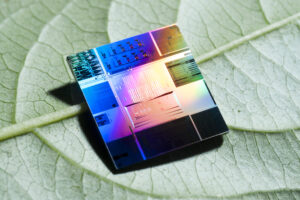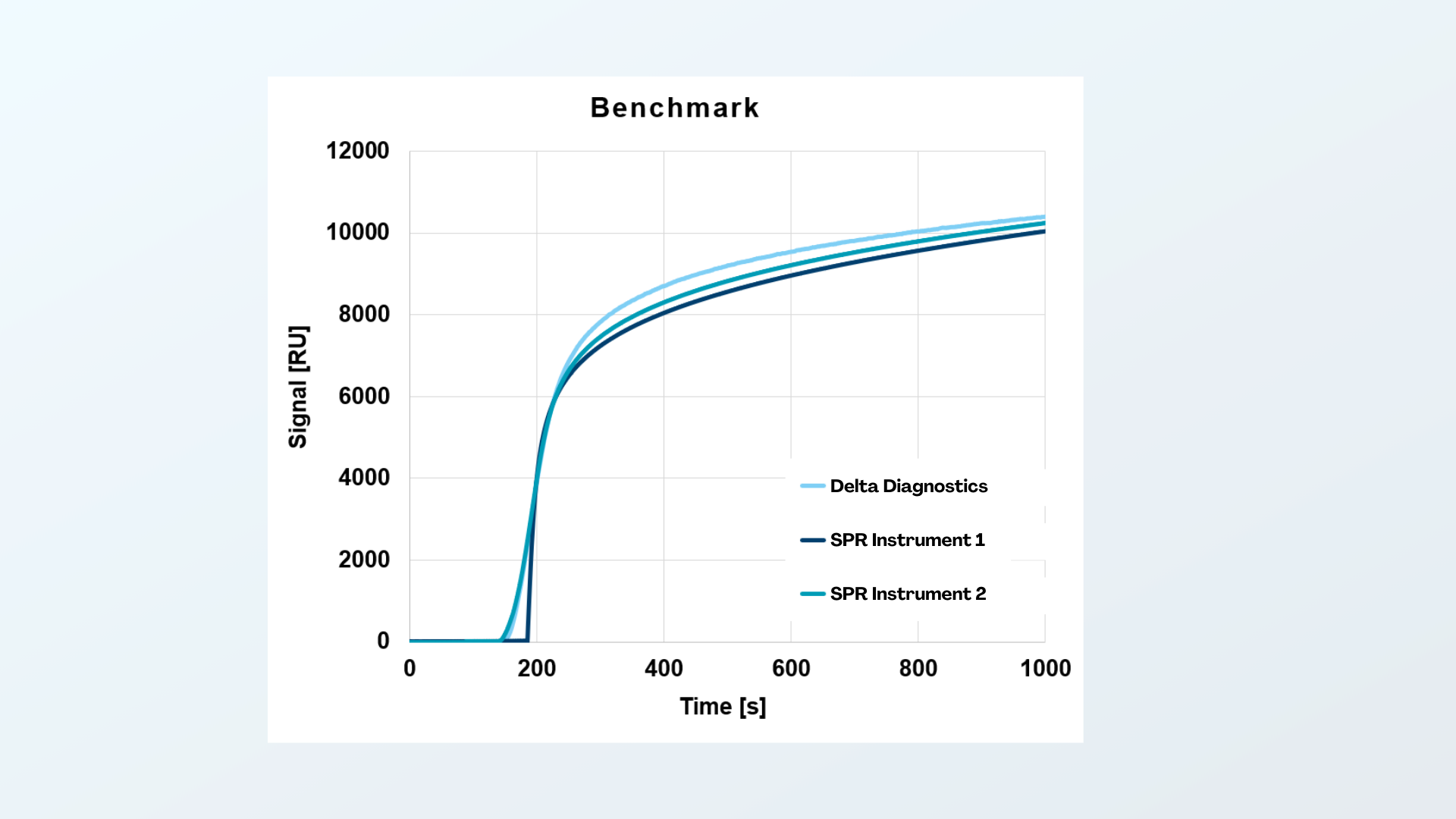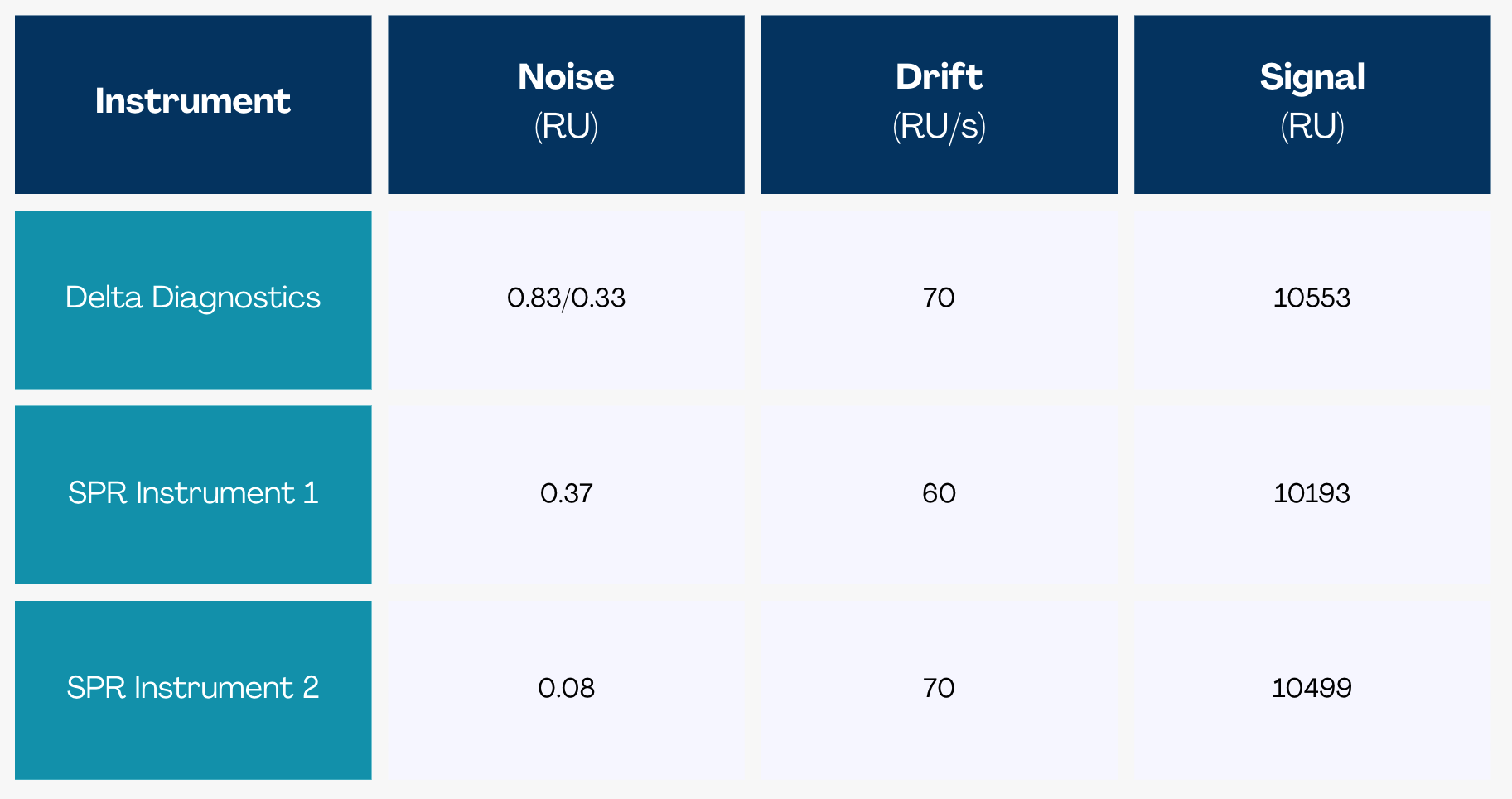Case Study
Delta Life Science’ label-free biosensors match the performance of high-end SPR technology at a fraction of the cost
The Technology
An optical chip (photonic integrated circuit) is a small silicon chip with optical waveguides on the surface. Light is transported across the chip by these waveguides. Interaction of the light, through its evanescent field, with surface-bound molecules allows for quantitative detection of biomolecules.
By coating affinity molecules, such as antibodies, on the surface of the chip, Delta Life Science has developed an extremely sensitive label-free immunoassay platform. It is considerably less expensive than industry-standard Surface Plasmon Resonance (SPR) technology, making label-free biosensing more accessible.

Figure 1. Optical Chip
The Challenge
In order to benchmark our instrument with currently existing SPR biosensing instruments, we performed the same experiment on 3 systems: Delta Life Science’ prototype instrument and two commercially available high-end SPR systems. Figure 1 depicts the results obtained with the three systems.
As can be seen, very comparable results in term of amplitude and shape of the response were obtained with all three instruments, showing that the sensitivity of Delta Life Science’ instrument prototype matches that of commercially available systems in these first experiments.

Figure 2: Binding of IgG on a Prot A/G derivatized sensor for three different instruments. Sensors of each system were functionalized using a hydrogel matrix derivatized with recombinant Protein A/G, allowing straightforward preparation of various IgG-capture surfaces. All sensors were functionalized in the same process run to make sure that the coating was identical for each sensor. The same sample, consisting of 100 µg/ml pooled IgG in PBS, was applied to the 3 sensors.
Table 1 provides an overview of the measured performance in terms of the signal amplitude obtained at 15 minutes after the start of the measurement, the baseline drift and the noise (1σ). The signal amplitude and baseline drift are almost identical for all instruments. In terms of noise, the second SPR system performed slightly better than the Delta Life Science prototype instrument and the first SPR system.

Table 1. Comparison of the Delta Life Science prototype instrument with two commercially available SPR machines. Two numbers are given for the noise of the Delta Life Science instrument. This relates to the number of sensors on the chip. For this experiment, we used a chip carrying 5 sensors. These can be used individually or simultaneously. When the signals of all the sensors are averaged, the noise was 0.33 RU. When the sensors are used separately, resulting in more datapoints per measurement, the noise was 0.83 RU. Meanwhile, with an improved sensor design, Delta Life Science has been able to further reduce the baseline noise to 0.01 RU and expects to report a further reduction of at least a factor 2 in the near future.
Benefits of the Technology
From these first experimental results it can be concluded that Delta Life Science’ instrument matches the performance of commercially available SPR systems. In other areas, Delta Life Science outperforms currently available systems. These typically allow simultaneous detection of only one or a few interactions, where Delta Life Science allows the detection of up to 16 interactions simultaneously. Furthermore, due to the inherently inexpensive technology used, Delta Life Science will be able to provide instruments at a much lower price. The large number of sensors per chip will significantly lower the cost per data point.
